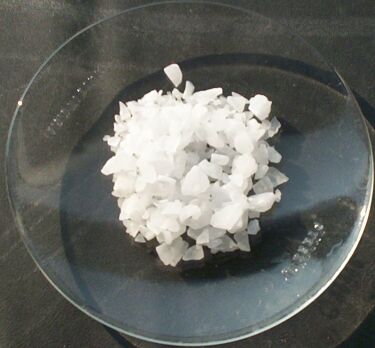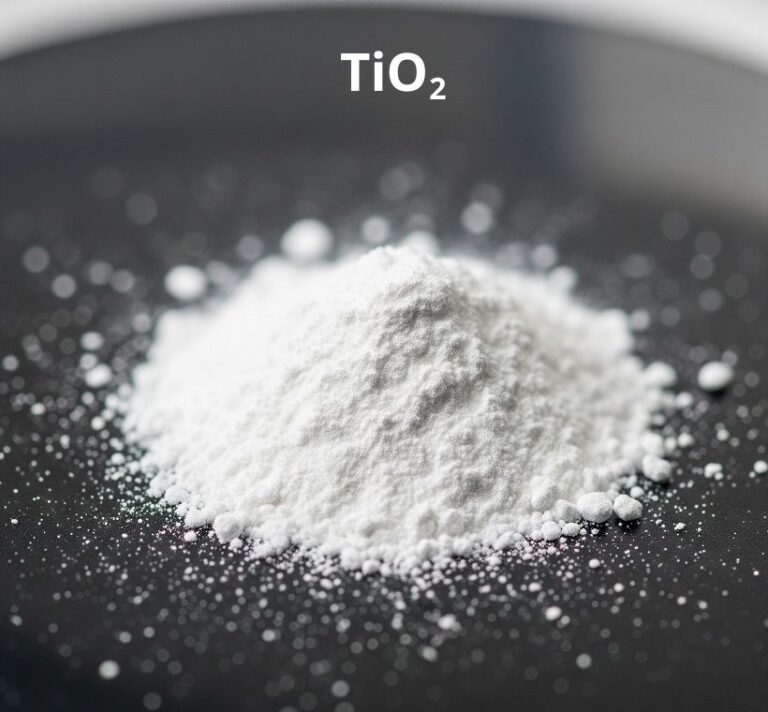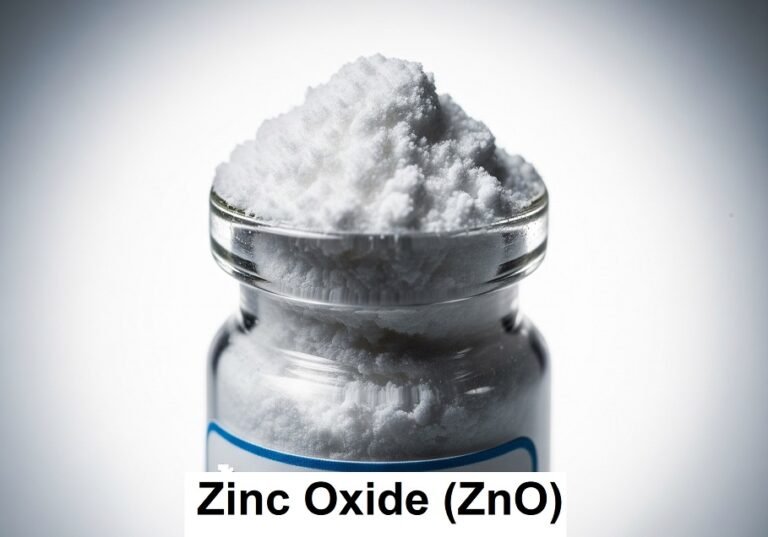
Aluminum sulfate is a chemical compound with the formula Al2(SO4)3. It is a white, odorless, crystalline solid that is soluble in water and forms a clear solution. Aluminum sulfate is a common industrial chemical and is used for a variety of purposes.
Aluminum sulfate is a widely used industrial compound that is second only to aluminum oxide in importance. It was first used in Paris in 1844 as a replacement for potassium alum. Today, aluminum sulfate has taken over almost all of the applications that were originally used for potassium alum.
Table of Contents
1. Properties of Aluminum sulfate
Aluminum sulfate is a white, odorless solid that is almost insoluble in anhydrous ethanol but readily soluble in water. Aqueous solutions of aluminum sulfate are acidic. The solubility of aluminum sulfate in water varies depending on the temperature and the concentration of other ions in solution.
The literature data on the solubility of aluminum sulfate is inconsistent, and it is difficult to make definitive statements about the structure of the precipitate in water.
| Temperature, °C | solubility (g/100 g water) |
|---|---|
| 0 | 31.3 |
| 10 | 33.5 |
| 20 | 36.15 |
| 30 | 40.36 |
| 40 | 45.73 |
| 50 | 52.13 |
| 60 | 59.10 |
| 70 | 66.23 |
| 80 | 73.14 |
| 90 | 80.83 |
| 100 | 89.1 |
The most common form of aluminum sulfate is Al2(SO4)3·18 H2O, which occurs naturally as alunogen (hair salt). This form of aluminum sulfate can also be crystallized from hydrochloric acid solution as microscopically small, white needles. However, some researchers have found that this form of aluminum sulfate actually contains 17 mol of water, while others have found that it contains 27 mol of water.
In addition to Al2(SO4)3·18 H2O, there are a number of other well-defined aluminum sulfates, including those that contain 16, 10, and 6 mol of water. There are also a total of 39 basic and 3 acidic aluminum sulfates, as well as 13 different hydrates of the neutral salt.
The existence of aluminum sulfates with 14, 13, 12, 9, 7, 4, 2, and 1 mol of water can be concluded from the vapor-pressure curves and the dehydration curves of the Al2(SO4)3–H2O and Al2(SO4)3–Al(OH)3–H2O systems.
In industrial practice, the hydrate water content of aluminum sulfate is unimportant because the material is a ground, microcrystalline solid with variable water content. The desired Al2O3 content is adjusted within certain limits by heating.
At a temperature above 340 °C, anhydrous aluminum sulfate is formed, a white powder with a density of 2.71 g/cm3. Anhydrous aluminum sulfate decomposes above 770 °C to form aluminum oxide.
2. Production of Aluminum Sulfate
Aluminum sulfate is produced on a large scale from aluminum hydroxide and sulfuric acid in a process called the Giulini process in Germany and most European countries, . This process is relatively simple and produces aluminum sulfate with high purity.
In some countries, aluminum sulfate is still produced by the action of sulfuric acid on aluminum-containing ores, such as clays and bauxite. This process is more complex and produces aluminum sulfate with lower purity.
2.1. Giulini Process
The Giulini process is a method for producing aluminum sulfate from aluminum hydroxide and sulfuric acid.
The process begins with the addition of aluminum hydroxide to a pressure-resistant, stirred vessel. Warm sulfuric acid is then added from a preheater, and the mixture is stirred. The reaction starts after 60–300 seconds and is complete after 10–12 minutes.
The heat of reaction causes the temperature to rise to approximately 170 °C, while the pressure rises to 5–6 bar. The mixture must not be stirred for more than 1 hour, as this can lead to the hydrolysis of aluminum sulfate and the formation of insoluble basic aluminum sulfate and strongly acidic sulfate melt.
The melt is then led to a copper container where it is concentrated by flash evaporation. From the evaporator, the melt is sucked into a well-isolated vacuum tank, which is evacuated to the vapor pressure of the aluminum sulfate melt. This vacuum cooling avoids the incrustation of the heat exchanger surfaces.
The melt falls from the vacuum container into a mixer, where it is seeded with 1–2% aluminum sulfate powder. The pulp-like product then reaches a “crystallization belt,” which is a smooth, heat-resistant, trough-shaped rubber conveyor belt. The product crystallizes on the belt in approximately 30 minutes.
Due to the high heat of crystallization, the material has a temperature of approximately 90 °C and cannot be broken into a fine size in one step. It passes over air-cooled conveyor belts until it has cooled to 40 °C, after which it is ground and sieved. The finished product is then filled into paper or jute sacks or transported loose in silo cars.
Aluminum sulfate produced by the Giulini process has a high purity of 17.2% Al2O3 and contains only 0.01% insoluble material. This means that the digestion of the aluminum hydroxide is almost complete. For transportation as a solution, the Al2O3 content is adjusted to approximately 8% to avoid crystallization during transport.
2.2. Production from Bauxite
Finely ground bauxite can also be used as a starting material for the production of aluminum sulfate. In this case, 3 moles of sulfuric acid are added for every 1 mole of aluminum oxide in the bauxite.
The iron oxide content of the bauxite is disregarded because the aluminum oxide is only digested to 97–98%, which leaves enough sulfuric acid available to produce aluminum sulfate containing 17.5% Al2O3.
The aluminum sulfate produced from bauxite contains approximately 0.5% Fe2O3 and 2.2% insoluble residue.
2.3. Production from Less Pure Starting Materials
When raw materials with silicon content undergo acid digestion, they yield a solution of aluminum sulfate. The purity of the final product depends on both the specific procedure and the nature of the initial materials.
The presence of iron, which can disrupt the process, is eliminated using different techniques. These include precipitating iron by reactions with substances such as calcium hexacyanoferrate (II), forming Berlin blue, or using calcium sulfide to create iron sulfide. Hydrolysis is used to generate basic iron sulfate.
The resulting clear solution is either decanted and marketed as a liquid or concentrated to a level of 61.5 °Bé and solidified before milling.
It forms the technical grade of aluminum sulfate and contains approximately 0.5% Fe2O3 and 0.1% insoluble material. Additionally, there is a higher-grade material with a negligible Fe2O3 content of roughly 0.005%.
The Kretzschmar process produces highly pure, iron-free aluminum sulfate by the digestion of clay with sulfuric acid. This procedure includes the extraction of a significant portion of impurities and the separation of crystals from the solution via stirring.
With the application of vacuum, the formation of undesirable colloidal substances is avoided. The process results in the isolation of pure, substantial crystals of Al2(SO4)3·18 H2O (15.3% Al2O3), which can be readily separated from the impure mother liquor using centrifugation.
The remaining residue, a byproduct of the digestion process (SiO2), is transformed into calcium hydrosilicate using lime, enhancing the hardness and plasticity of lime mortar.
To reduce the oversaturated aluminum sulfate mother liquor, the U.S. Bureau of Mines developed a process that uses ethanol to accomplish this.
The Olin Mathieson Chemical Corp. has developed an economical technique to yield high-quality aluminum sulfate using clay or waste shale sourced from coal mines. Large crystals (measuring 1.5–3 mm) with an iron content below 0.03% are formed by using a crystallizer.
Aluminum sulfate can be produced from waste “red mud,” a residue originating from the aluminum oxide industry. The red mud is suspended in water, and sulfur dioxide is passed through the suspension until a pH level of 2 is achieved.
A precipitate containing Al(OH)SO3 and SiO2•n H2O is formed after filtration and removal of the sulfur dioxide under vacuum. It is then filtered and treated with sulfuric acid to dissolve the aluminum sulfate.
3. Uses of Aluminum Sulfate
About two-thirds of the total aluminum sulfate production is used for treating water, and about one-half of the total production is used in the paper industry.
3.1. Paper Industry
In the paper industry, aluminum sulfate is used for a variety of purposes, including:
- Precipitating and fixing sizing agents, wet-strength agents, and basic dyes
- Improving retention
- Dispersing resin particles that stick together and block sieves
- Producing a high-quality slip for coating glossy paper (satin white)
- Producing lake dyes and wallpaper
Aluminum sulfate with more than 0.2% Fe2O3 gives paper a yellow tinge and cannot be used for good-quality white paper.
3.2. Water Purification
In water purification, aluminum sulfate is an important flocculating agent. Flocculation is the process of causing small particles to clump together so that they can be more easily removed from water.
Aluminum sulfate works by neutralizing the negative charge on the colloidal material in water, which allows the particles to clump together.
The reaction that occurs when aluminum sulfate is added to water is as follows:
Al2(SO4)3 + 6 HCO3– → 2 Al(OH)3 + 6 CO2 + 3 SO42-
In this reaction, the aluminum ions in aluminum sulfate react with the bicarbonate ions in water to form aluminum hydroxide, carbon dioxide, and sulfate ions. The aluminum hydroxide then flocculates with the colloidal material in the water, causing it to clump together and settle out.
Generally, 5–50 g of aluminum sulfate is sufficient to purify 1 m3 of water. An advantage of using aluminum sulfate is that it does not require post-flocculation, provided the correct amount is added.
Disadvantages of using aluminum sulfate include the formation of free carbon dioxide, the increase of non-carbonate hardness, such as calcium sulfate, and the pH remaining between 5 and 7.
3.3. Other Uses
Aluminum sulfate can also be used for a variety of other purposes, including:
- As a mordant in dyeing
- For pickling of seeds
- Deodorizing of mineral oils
- Tawing
- Producing aluminum hydroxide gel
- As a catalyst support
- As the starting material for almost all other aluminum compounds
Aluminum sulfate is a non-toxic substance. A reported LD50 value of 6207 mg/kg (oral, mouse) indicates its relatively low toxicity.
Reference
- Aluminum Compounds, Inorganic; Ullmann’s Encyclopedia of Industrial Chemistry. – https://onlinelibrary.wiley.com/doi/10.1002/14356007.a01_527.pub2



